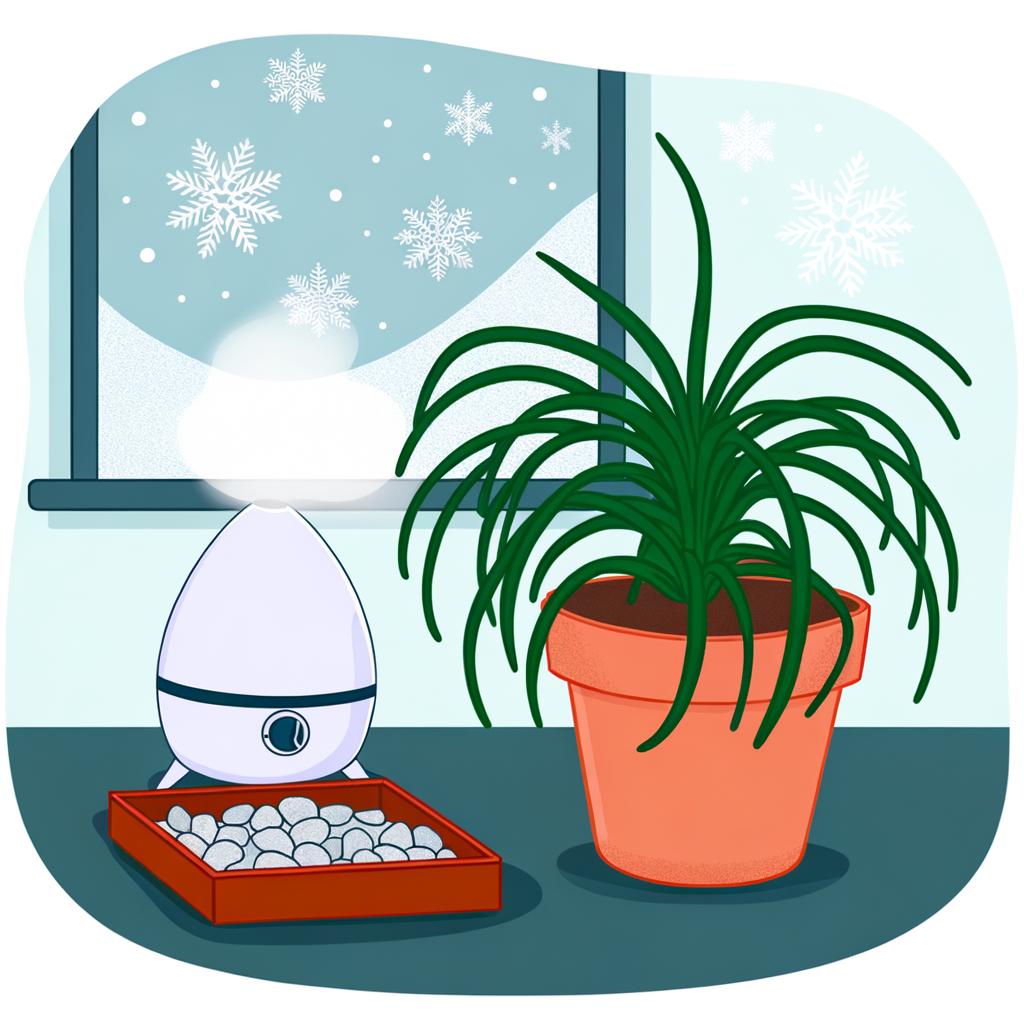Spider Plant Winter Care: Complete Indoor Survival Guide
Winter can be challenging for spider plants, but with the right care, they'll thrive indoors all season. Here's how to keep your plant healthy during the colder months.

Why Winter Care is Different
Winter brings unique challenges for spider plants, including reduced daylight, dry indoor air from heating systems, and natural dormancy periods. Understanding these changes and adjusting your care routine accordingly is essential for maintaining healthy plants through the cold months.
Understanding Winter Dormancy
Spider plants naturally slow down during winter months, entering a period of reduced growth and metabolic activity. This dormancy is normal and helps the plant conserve energy during challenging conditions.
Dormancy Signs:
- • Slower growth: Fewer new leaves and spiderettes
- • Reduced water needs: Soil stays moist longer
- • Less fertilizer requirement: Minimal nutrient uptake
- • Darker leaf color: Slightly less vibrant appearance
- • No flowering: Blooms typically stop in winter
Temperature and Environment Management
Maintaining the right temperature and environment during winter is crucial for spider plant health. Avoid extreme temperature fluctuations and provide consistent conditions.
Optimal Winter Conditions:
- • Temperature: 60-70°F (15-21°C) - slightly cooler than summer
- • Light: Bright, indirect light (south or west windows)
- • Draft protection: Keep away from cold windows and doors
- • Heat vent avoidance: Don't place near heating vents
- • Consistent conditions: Avoid sudden temperature changes
Winter Hazards to Avoid:
- • Cold drafts from windows or doors
- • Direct heat from radiators or vents
- • Temperatures below 50°F (10°C)
- • Sudden temperature drops at night
- • Placement near air conditioning units
Winter Watering Adjustments
Reduced growth and cooler temperatures mean your spider plant needs less water during winter. Overwatering is the most common winter care mistake and can lead to root rot.
Winter Watering Guidelines:
- • Reduce frequency: Water 50% less than summer
- • Check soil moisture: Let top 2 inches dry before watering
- • Use room temperature water: Avoid cold water shock
- • Water thoroughly: But allow excess to drain
- • Monitor closely: Adjust based on your home's conditions
Watering Schedule Examples:
- • Summer: Every 5-7 days
- • Winter: Every 10-14 days
- • Very dry homes: Every 7-10 days
- • Humid homes: Every 14-21 days
For comprehensive watering guidance, see our complete watering guide.
Humidity Solutions for Winter
Indoor heating systems create dry air that can stress spider plants. Maintaining proper humidity levels during winter is essential for preventing brown tips and maintaining plant health.
Winter Humidity Strategies:
- • Humidifier: Most effective for large spaces
- • Pebble trays: Place under plant pots
- • Group plants: Creates microclimate
- • Bathroom placement: Natural humidity from showers
- • Kitchen placement: Humidity from cooking
Target Humidity Levels:
- • Ideal winter humidity: 50-60%
- • Minimum acceptable: 40%
- • Monitor with hygrometer: Check levels regularly
- • Adjust as needed: Based on plant response
For detailed humidity guidance, see our complete humidity guide.
Winter Fertilizing Guidelines
During winter dormancy, spider plants need minimal nutrients. Over-fertilizing can cause salt buildup and damage roots when the plant isn't actively growing.
Winter Fertilizing Rules:
- • Stop fertilizing: From late fall to early spring
- • Resume in spring: When new growth appears
- • Flush soil: Water thoroughly to remove salt buildup
- • Monitor for signs: Yellow leaves may indicate over-fertilization
- • Use half-strength: When resuming in spring
Fertilizing Mistakes to Avoid:
- • Fertilizing during dormancy
- • Using full-strength fertilizer in winter
- • Fertilizing stressed or sick plants
- • Not flushing soil before winter
For comprehensive fertilizing guidance, see our complete fertilizer guide.
Common Winter Problems and Solutions
Winter can bring specific challenges for spider plants. Recognizing and addressing these issues early helps prevent serious damage and ensures your plant survives until spring.
Winter Issues and Solutions:
- • Brown tips: Increase humidity, check water quality
- • Yellow leaves: Reduce watering, check for overwatering
- • Wilting: Check for cold drafts or underwatering
- • No growth: Normal dormancy, ensure adequate light
- • Pest infestations: Isolate and treat immediately
Prevention Tips:
- • Monitor temperature and humidity regularly
- • Check for pests weekly
- • Inspect leaves for damage or disease
- • Maintain consistent care routine
- • Keep plants away from extreme conditions
For comprehensive troubleshooting, see our spider plant dying guide and yellow leaves guide.
Preparing for Spring Revival
As winter ends and days lengthen, your spider plant will naturally begin to wake up from dormancy. Proper spring care helps ensure a smooth transition back to active growth.
Spring Revival Steps:
- • Gradually increase watering: As new growth appears
- • Resume fertilizing: Start with half-strength solution
- • Repot if needed: Check for root-bound conditions
- • Prune dead leaves: Remove winter damage
- • Adjust light exposure: Move to brighter location if needed
Signs of Spring Revival:
- • New leaf growth at plant center
- • Increased water consumption
- • Brighter leaf color
- • Spiderette production (in mature plants)
- • More active root growth
For complete spring care guidance, see our complete care guide.
Keep Your Spider Plant Thriving Through Winter
With proper winter care, your spider plant can not only survive but also maintain good health through the cold months. Understanding dormancy and adjusting your care routine accordingly is key to success. For year-round care guidance, visit our complete care guide.